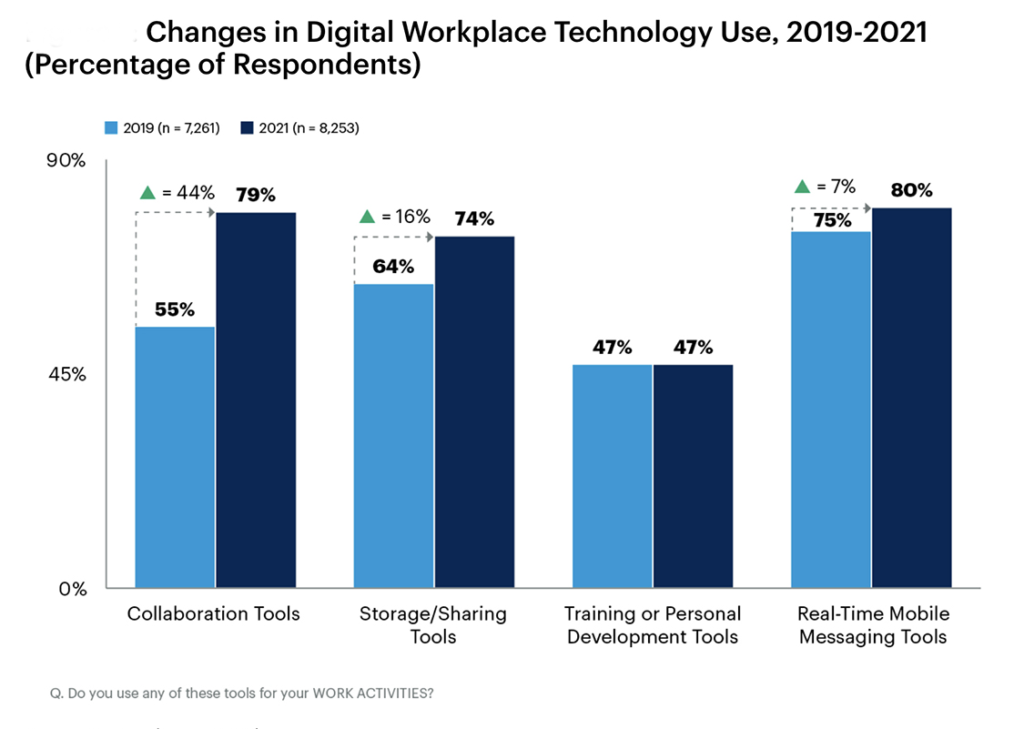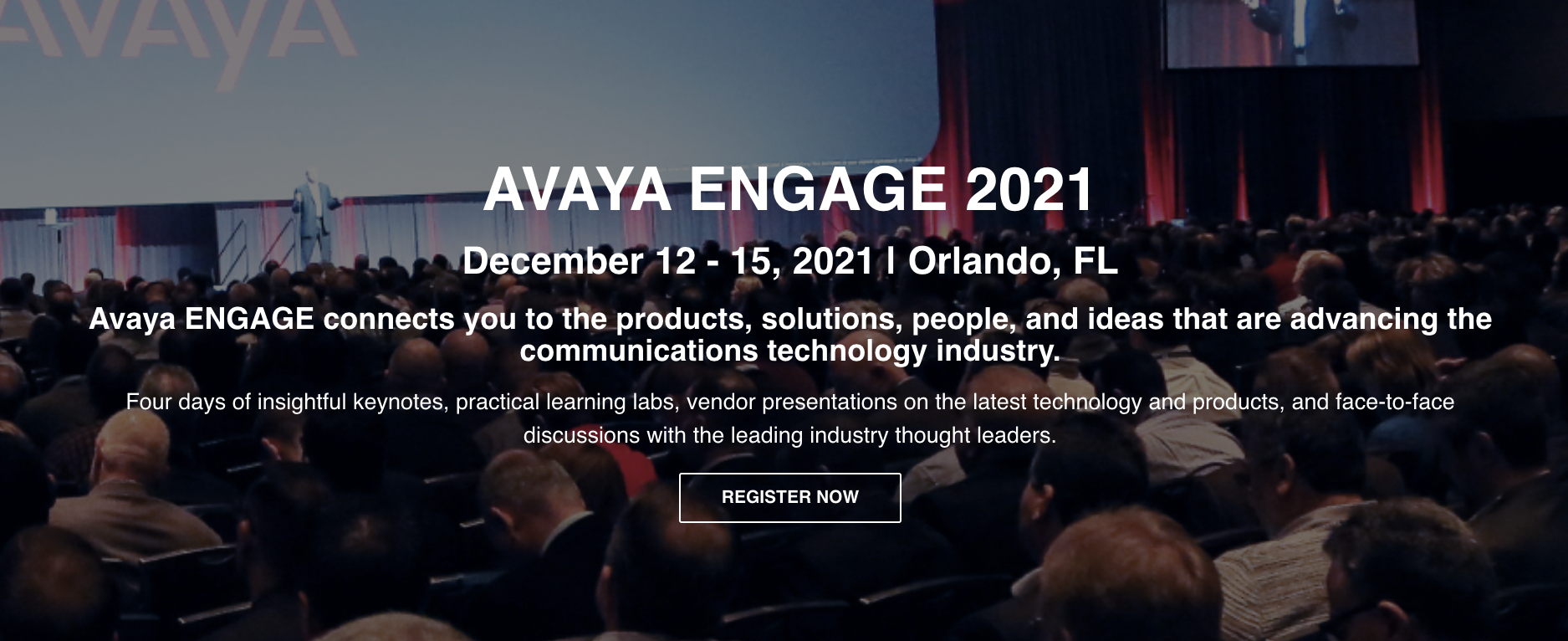Here’s a new survey that won’t surprise any Avaya IT professional. Nearly 80 percent of workers are using collaboration tools for work in 2021, compared with just over 50 percent of workers in 2019, according to the Gartner, Inc. Digital Worker Experience Survey. The study, released in August, showed collaboration has grown 44 percent since the pandemic began.
“Collaboration tools found renewed importance during COVID-19 for their role in ensuring the productivity of suddenly remote teams,” said Christopher Trueman, principal research analyst at Gartner. “As many organizations shift to a long-term hybrid workforce model, cloud-based, personal and team productivity technologies, along with collaboration tools, will form the core of a series of new work hubs that meet the requirements of various remote and hybrid workers.”
Storage/sharing and real-time mobile messaging tools also saw increased use during the pandemic, used by 74 percent and 80 percent of 2021 respondents, respectively.
Meanwhile, the use of meeting solutions also surged. While workers globally reported that they spent, on average, 63 percent of their meeting time in-person in 2019, that number dropped to 33 percent by 2021 as more meetings took place over audio and video-enabled meeting solutions.
Implications for IT leaders
The shift away from in-person meetings is expected to continue. Gartner predicts that by 2024, in-person meetings will drop to just 25 percent of enterprise meetings, driven by remote work and changing workforce demographics.
“As IT leaders prepare for a mix of meeting modalities, it will be critical that they ensure equitable collaboration, tool and resource access for all meeting participants, regardless of location,” said Trueman. “Cloud-based meeting solutions and content service platforms can support this through offerings or integrations with technologies including virtual whiteboards, rich chat features, and recording and transcription capabilities.”
For IT leaders, the shift also means revising current office configurations, with a focus on organizational culture, user experiences and flexibility. For instance, a regional law firm might have different collaboration requirements than a healthcare system or a global energy company.
“We are moving into the new frontier of the workplace, creating exciting ways of being collaborative and productive,” said Emily Klein, director of workplace, Perkins & Will, in a recent BrightTalk webinar, “A Guide to Getting Workplace Transformation Right for Employees.”
Mike Petrusky, director of events and growth marketing, iOffice, hosted the discussion with Klein and Melissa Steach, workplace wellbeing knowledge lead, Herman Miller Group. “Working from home is more productive for many employees, but it’s harder for managers to get to know their people,” said Steach.
Klein emphasized the importance of designing workplaces that provide for in-person collaboration and socialization, as well as connectivity with remote workers. “Employees want freedom, choice and autonomy, and managers need to provide a culture that makes employees feel supported both personally and professionally.”

Questions to consider
From office floorplates to corporate culture, IT leaders should discuss collaboration strategies with line-of-business and office managers, said Steach. “Remember that gathering data from users is important,” she added. “But you need to synthesize that data and think about it carefully before making decisions.”
Some questions to consider when discussing collaborative tools and meeting/huddle rooms in an office setting:
• How many participants will attend in person for a typical hybrid meeting?
• How many in-person or hybrid meetings are likely to occur at the same time?
• Will teams need to be together in person on the same day?
• Will users have assigned desks or will there be a booking system?
• Will employees need storage for the laptops, or will they bring them back and forth from home?
• Will remote workers have access to the same features and functions as their in-office counterparts?
“The goal is for employees to be able to collaborate in whatever way they want,” said Klein. That means being able to design the workplace setting, as well as supplying the digital tools. You can’t create a one-size fits all, Instead, think about the space and about culture as enablers for creating high-performing workspaces.”

